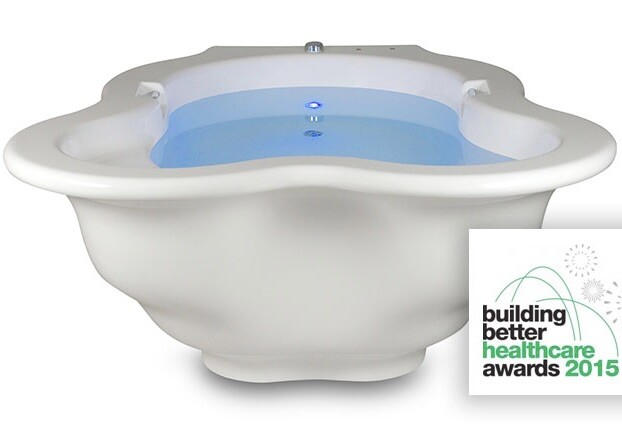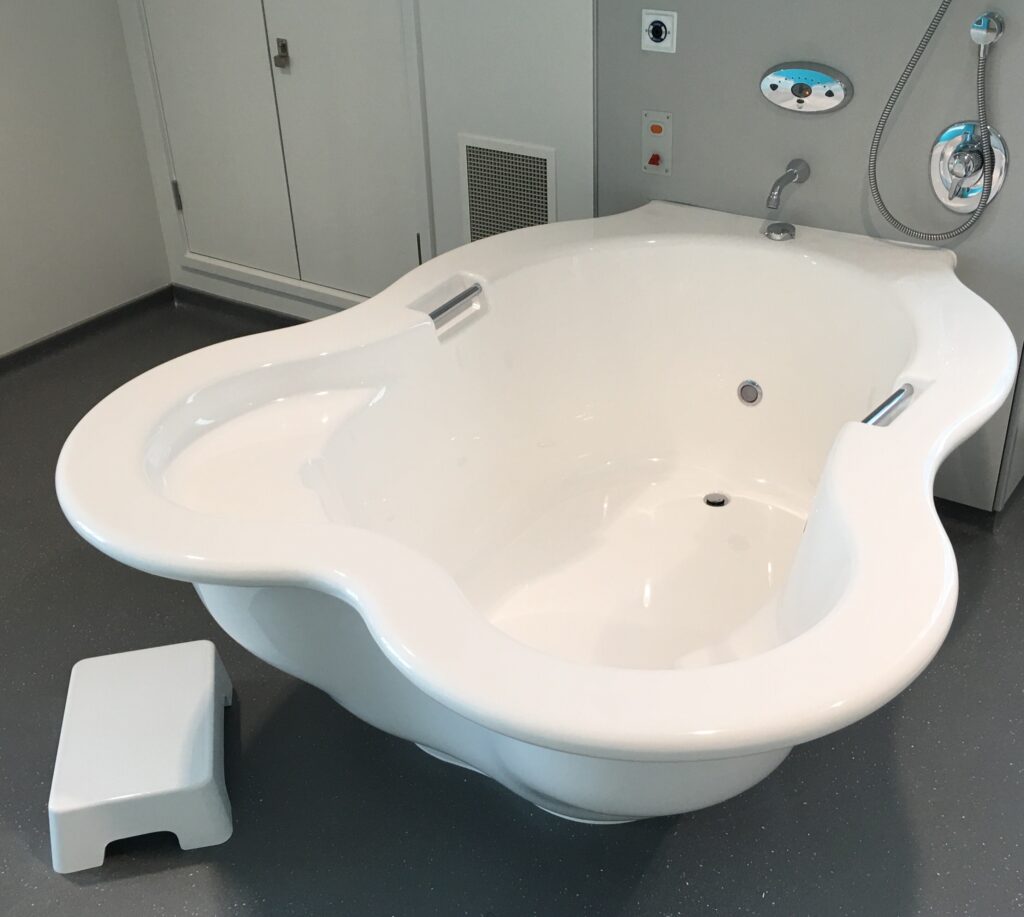Originally published by Laurie Barclay, MD Medscape Medical News. Jan. 26, 2004
Laboring in water can be helpful in dystocia, according to the results of a randomized controlled trial published online Jan. 26 in the British Medical Journal.
“Incomplete understanding of labour may lead to unnecessarily early intervention,” write Elizabeth R. Cluett, from the University of Southampton in the U.K., and colleagues.
“Labouring in water under midwifery care may be an option for slow progress in labour, reducing the need for obstetric intervention, and offering an alternative pain management strategy.”
To test their hypothesis that laboring in water can relieve pain and anxiety and thereby reduce the need for interventions, the authors compared outcomes for immersion in water in a birth pool during the first stage of labor with those for standard augmentation including amniotomy and intravenous oxytocin.
Subjects were 99 nulliparous women with low risk of complications and with dystocia, defined as cervical dilation rate less than 1 cm/hour in active labor. Primary outcome measures were rates of epidural analgesia and operative delivery.
Compared with women receiving standard care, those receiving water immersion had a lower rate of epidural analgesia (47% vs. 66%; relative risk [RR], 0.71; 95% confidence interval [CI], 0.49 – 1.01), number needed to treat [NNT] for benefit = 5).
Rates of operative delivery (49% vs. 50%; RR, 0.98; 95% CI, 0.65 – 1.47; NNT = 9 and overall labor length were similar in both groups.
However, significantly fewer women in the water immersion group received augmentation (71% vs. 96%; RR, 0.74; 95% CI, 0.59 – 0.88; NNT = 4) or any obstetric interventions including amniotomy, oxytocin, epidural, or operative delivery (80% vs. 98%; RR, 0.81; 95% CI, 0.67 – 0.92; NNT = 5).
Women in the water immersion group also reported significantly lower pain scores and higher satisfaction with freedom of movement than did women in the standard care group.
Although more newborns in the water group were admitted to the neonatal unit (6 vs. 0; P = .013), there was no difference between groups in Apgar score, infection rates, or umbilical cord pH.
Limitations of this study include recruitment of only 99 of 220 eligible women, increased difficulty with recruitment toward the end of the trial because of changes in standard care, and sample size too small to detect statistical differences in use of epidural analgesia.
“Delaying augmentation in association with a supportive environment (water immersion) is acceptable to women with dystocia and may reduce the need for epidural analgesia without increasing labor length or operative deliveries,” the authors write.
“A management approach that reduces rates of augmentation and associated obstetric intervention may contribute positively to maternal physiological and psychological health: oxytocin infusion is known to increase the risk of uterine hyperstimulation and fetal hypoxia, and obstetric interventions are associated with lower maternal satisfaction.”
The authors report no financial conflicts of interest. BMJ. Published online Jan. 26, 2004. Reviewed by Gary D. Vogin, MD









